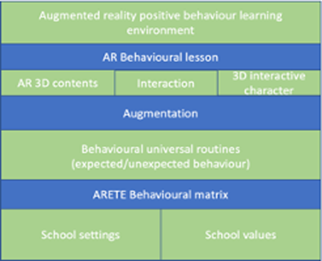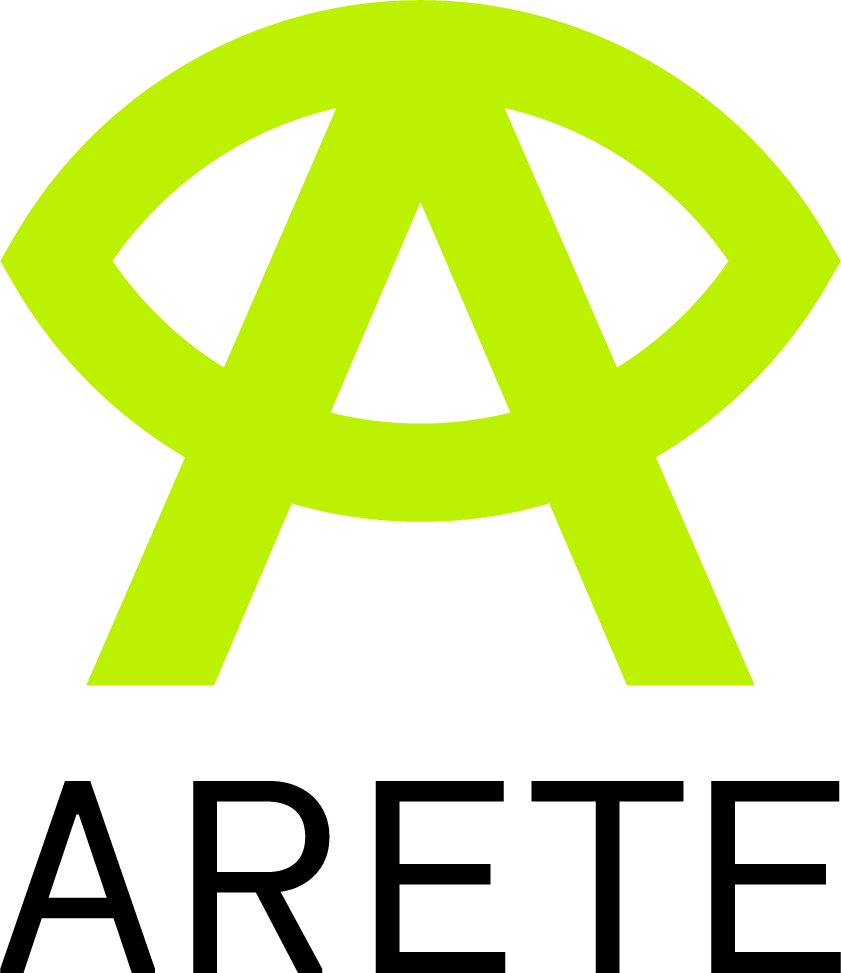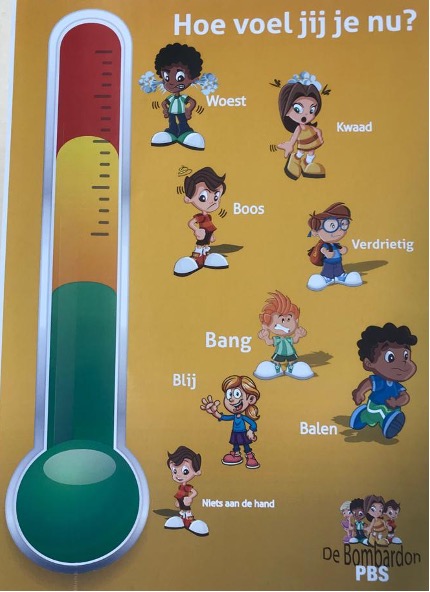Augmented Reality to support teaching and learning of behavioural routines
Augmented Reality can offer increasingly more immersive educational scenarios, and the integration of AR solutions into educational content produces augmentation that can impact students’ interest and motivation (Arrigo et al. 2018; Chiazzese et al. 2018). The Pilot 3 of the ARETE project seeks to implement an innovative use of AR technology focusing on the development of an application within the framework of SWPBIS to promote students’ behavioral and cognitive skills.
The following figure presents the AR-PBIS model guiding the design of our AR PBIS software solution.

The green boxes in the model represent an input for or an output of the designing process illustrated in the blue boxes. Specifically, the first process (blue box at the bottom of the figure) results in the development of the ARETE behavioural expectations matrix which in turn leads to a set of behavioural routines based on the combination of 3 to 4 school values and settings.
Behavioural expectation is a behavioural routine that consists of a set of actions defined according to goals and situations (Hodgson 1997; Taylor 1950); they can be learned and shaped through repeated practices (Martin 2008; Ronis et al. 1989). The ARETE behavioural expectation matrix was developed based on the results of a literature review, ideas of PBIS-experts, and expectation matrixes developed by schools and captured by a search on the Internet. It identified the more typical set of behavioural expectations and school settings where the behaviour is expected to be performed.
Each behavioural routine thus includes a description of the expected behavior by a student in a specific school setting (e.g. playground, hallway, classroom). It represents the input for the next designing process, i.e. augmentation, aimed to the creation of all those elements (e.g. characters, furnitures) needed for the behavioural scenario. The augmented scenario also includes a 3D character that shows students how to perform the expected behaviour interacting with other AR objects and characters.
The scenarios designed for the behavioural routines will represent the basis for the last development step aimed at realizing a set of AR behavioural lessons. In this stage, a small team of primary school teachers is committed to the development of the behavioural lessons to teach the behavioural routines with the integration of the implemented augmented reality resources. The aim is to create a new AR learning environment that may further facilitate students’ acquisition of behavioural management skills as promoted within the PBIS approach.
The AR is intended to provide a learning environment where the behavioural routines can be practised with greater motivation. AR Visuals can also represent effective environmental cues for learning and reinforcing of expected positive behaviours.
By CNR
References:
Arrigo, M., F. Cappello; F. Di Paola; M. Farella; G. Lo Bosco; D. Saguto; and F. Sannasardo. 2018. “HeARt Mobile Learning.” In Proceedings of the 10th International Conference on Education and New Learning Technologies (Palma de Mallorca, Spain, Jul 2-4). IATED Academy, Valencia, Spain, 10899-10905.
Chiazzese, G.; E. Mangina; A. Chifari; G. Merlo; R. Treacy; and C. Tosto. 2018. “The AHA Project: An Evidence-Based Augmented Reality Intervention for the Improvement of Reading and Spelling Skills in Children with ADHD.” In Proceedings of the 7th International Conference on Games and Learning Alliance (Palermo, Italy, Dec, 5-7). Springer, Cham, 436-439.
Hodgson, G.M. 1997. “The ubiquity of habits and rules.” Cambridge Journal of Economics 21, No.6 (Nov), 663-684.
Martin N. 2008. Habit: the 95% of Behavior Marketers Ignore. Financial Times, Prentice Hall N.J.
Ronis D.L.; J.F. Yates; and J.P. Kirscht. 1989. “Attitudes, Decisions, and Habits as Determinants of Repeated Behavior.” In Attitude Structure and Function, A.R. Pratkanis; S.J. Breckler; and A.G. Greenwald (Eds.). Lawrence Erlbaum, N.J., 213-239.
Taylor, R. 1950. “Purposeful and Non-Purposeful Behavior: A Rejoinder.” Philosophy of Science 17, No.4 (Oct), 327-332.



